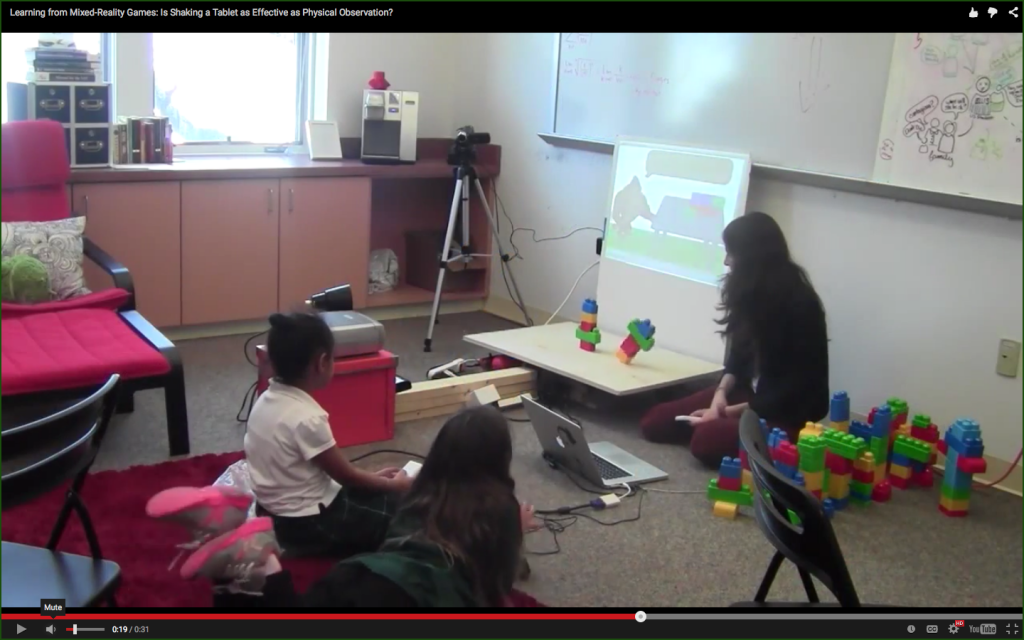 New research focused on learning games for first and second graders indicate that mixing virtual games with real world elements is more effective than simply having them play the app.
New research focused on learning games for first and second graders indicate that mixing virtual games with real world elements is more effective than simply having them play the app.
The research from Carnegie Melon University studied nearly 100 students age 6 to 8. In the study, some students just played an app, some played the app that included very basic physical actions – like shaking the tablet, and a final group mixed game play with observations in the physical world.
The results were striking. The CMU researchers report that students who mixed the real world with the digital game retained five times more information than those who just played the app or played the basic interaction game.
“Our experimental results provide evidence that observing physical phenomena in the context of an interactive mixed-reality game plays an important role for learning and enjoyment, while adding simple physical controls such as having the kids shake the tablet in a screen-only game or press the physical switch in a mixed-reality game does not have an effect on learning or enjoyment,” the authors wrote.
Audrey Armitage wrote about the research over at Ed Week and spoke with the researchers about why the mix of real and virtual work. She wrote that, one of the researchers “hypothesized that the mixed-reality game may have been effective for the younger group of students in part due to them being at a relatively early stage of development. While older students may be better able to process information simply presented on a flat screen, merging the physical and virtual world can be particularly beneficial for younger learners.”
The research has been peer reviewed and presented at a conference this year in computer and human interaction, but still the researchers cautioned against drawing any general conclusions from the study.
Although the results are striking it is different to know whether the results have to do with the age group, subject covered or even the specifics of the game, but still for those developing games for younger students, considering how to possibly incorporate real-world observations or physical activity to augment the game could be something worth considering and/or testing.
